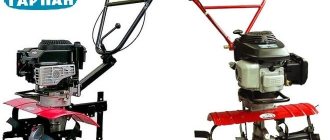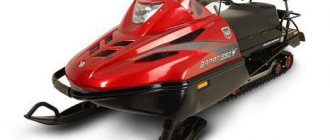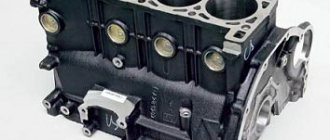Types of hand mills
The models of hand mills offered today contain quite a lot of differences, both in functional purpose and in the quality of the materials from which they are made. The most universal options, in addition to the minimum set of functions, may contain additional elements that allow, for example, simultaneous grinding and flattening. If the set comes with a grain press, it becomes possible to prepare flakes.
By purpose
The main division of hand mills by purpose is their intended use:
- for preparing flour;
- for grinding spices.
From the corresponding cereals (corn, rice, buckwheat, barley and others), as well as legumes (peas, beans, beans), by hand grinding you can obtain substances of both large and small fractions, depending on the recipe recommendations. The possibility of obtaining such fractions is especially valuable for dietary purposes. So, if you need to prepare confectionery products, you should resort to the finest grinding. For porridges, soups, casseroles, and certain complex fillings, it is better to prepare medium or large fractions, preserving as much as possible the set of nutritional properties and vitamins.
Typically, such mills are equipped with a special sieve (for the purpose of cleaning the resulting fractions from large particles). Ultimately, the specific gravity of the finished product is 80%. This is flour of uniform consistency with particle size depending on the initial characteristics of the grain.
The most relevant today are millstones made from an alloy of corundum and ceramics. It is reliable, durable, rational. Optimum wear resistance is ensured at a relatively inexpensive price.
Grinding spices using hand mills can be done before preparing a dish, immediately at the time of serving, or for temporary storage. In the latter case, specific organoleptic properties are gradually lost, that is, the spices “dissipate.” To preserve the original zest and brightness of taste, it is better not to resort to this storage method.
It should be remembered that it is not recommended to grind spices based on oilseed components or spices in a hand mill (for example, nuts, mustard, sunflower seeds, flax seeds). This is explained by the fact that oily deposits accumulate on the millstones, clogging them and preventing further efficient operation. If this is still necessary, it is worth mixing the oilseed crop, for example, with grain or flakes.
For flour
For spices
By functionality
If we talk about the functionality of devices, they can be divided into the following types:
- disposable;
- reusable.
Since it is optimal to grind grains and spices immediately before using them, for the convenience of users, components are now commercially available already placed in so-called disposable manual grinders. More often they are made of glass, food-grade plastic, less often - wood, metal. The principle of operation of such a device is simple: by turning the lid clockwise, freshly ground ingredients fall into a plate or pan through the holes made in it. As the entire mass inside is crushed, the empty container is disposed of.
These mills are small in size, their shape is convenient to grasp with the hand, they are easy to clean externally, and have a stable base. A positive feature of such an item is the benefits of freshly ground products. However, naturally, the price of the components to be crushed is significantly higher than buying them in regular weight packaging.
Reusable mills are sold without filling. They have special holes for filling and consist of a knife (millstones) and a container for the crushed product. Manufacturing materials are very different, from wood of fragrant species to high-quality food steel. The operating mechanism is similar to single-use models, with the difference that the resulting product is poured into a storage container.
The internal parts of such models are more practical than those of disposable ones; they are designed for successful operation over a certain period of time. However, depending on the hardness of the products being ground, a change of millstones is still provided. Yes, and the body can receive mechanical damage.
When using reusable mills for multi-profile work, their mechanisms should be thoroughly cleaned so that the remnants of the previous grinding do not get into the new flour, transmitting their odors and tastes.
Reusable Disposable
How to choose a home mill
Which mill should I buy for home? Can a home mill make white flour? How do you even choose, since the site is full of them, how do they differ? I periodically answer these and other questions in the comments, and so I decided to collect it all in one place - here on the blog and talk about Arthur’s and my mills and how to choose a mill for your home.
Let's start with the fact that, if you have a burr mill at home, whole grain flour can be made from wheat, rye, spelled, spelled, barley, etc. This is convenient because grain is stored much better than flour, and whole grain flour, due to the natural content of oils in the germ, spoils quite quickly. When the mill is at hand, you just need to pick up a little grain, pour it into the mill hopper and in a couple of minutes you will get fresh, aromatic flour for bread or pastries. Every time I enjoy this opportunity and the process, the flour turns out so flavorful!
For many, this is still surprising (what kind of unit is this in the video??), but it’s surprising to me that someone else doesn’t know that flour can be made at home
Grain mills were the first to sell mills in Russia and it happened, you won’t believe it, 10 years ago! During this time, more than two thousand people bought mills for their homes and now make whole grain flour themselves! I have been using my mill since 2013, since I started writing this blog, and I can no longer imagine what it’s like to live without a mill and fresh whole grain flour)) Arthur and I have two mills - Hawos Queen 1 (as you understand, she already in its ninth year) and Hawos Oktini , my first, Arthur’s second, and it appeared at a time when we were actively traveling to different cities for master classes and bakeries - to take with us, because it is more compact than my Queen . Both of our mills are electric, have a beautiful wooden body (Octini is objectively more elegant than Queen), inside there is a motor with protection against overheating and stone millstones (Octini has a slightly smaller size - 7 cm in diameter)
However, they have the same power - only 360 W. Due to the larger diameter millstones (10 cm), Queen works a little faster than Octini, but Octini can grind buckwheat, and my Queen on buckwheat skids a lot and heats up the millstones. Both are made of beech, mine is made of plywood coated with linseed oil, Octini is made of solid beech impregnated with linseed oil.
Watch the video about Queen 1 and 2 mills:
Our mills are, let's say, entry-level; they are suitable for those who use whole grain flour, have a not very large family (2-5 people) and bake mainly for family and loved ones. There are many similar mills on the site: Hawos Easy , Oktini , Queen1 , Billy100 , Oktagon1. They may differ in price up or down, but the functionality and characteristics are approximately similar:
- The motor power is 360 W, which allows you to grind about 5 kg at a time. grains (as for me, a lot))
- Stone millstones (alloy of ceramics with corundum), diameter mostly 10 cm, except Oktini and Easy (7 cm)
- The body is made of wood or plywood (beech, birch) in different treatments (oil or drying oil).
- All types of wheat can be ground, including durum varieties, rye, barley, rice, lentils, chickpeas, corn, etc. Fried buckwheat is difficult, except for Hawos Easy and Oktini (they can, especially if mixed with other grains). If desired, you can also grind spices and coffee on the logs, but we don’t do that, then the flour has a distinct smell))
- They cannot grind raw soft grains (young rye and oats) and oilseeds. All this can clog the millstones (stick to the millstones) and cause them to become very hot.
All these mills are beautiful without exception and, it seems to me, will fit into any interior, but, nevertheless, they differ in size and design. Whichever is nicer to you - look through what catches your eye))
In addition to the German Hawos mills, there are also Austrian Waldner Biotech , they are also beautiful and functional, they can also lubricate any grain. This company, by the way, has a hybrid model that can be used to make both flour and cereal - Waldner Biotech Combi-Star . We have a separate Eschenfelder AB , it’s manual ( I’m testing it here )
When you need more powerful mills
If you bake to order or have a small bakery or teach cooking courses, then an entry-level mill will not be enough for you and you need to look towards more powerful ones - the same ones that I listed above, only with a power of 600 W. More powerful models are larger in size (but not much) and have a millstone size of 10 cm and can work for 30-40 minutes. without interruption, while grinding twice as much grain, i.e. 10-12 kg at a time.
Is it possible to make premium flour in a home mill? No, you can’t, only whole grain flour, but to get a finer flour, just sift your whole grain flour. And, by the way, resting/oxidation is not necessary for whole grain flour, unlike flour devoid of coarse particles of white flour (high-grade, 1st grade, extra, extra finely ground, etc.) Because in this case, the formation of structure and taste is involved and bran, this greatly changes the behavior of dough made from whole grain flour.
Where to get grain? Especially in our time, when even normal bread is not available in stores, let alone wheat! They ask on the Internet))) Friends, usually, as soon as a request appears, an opportunity appears, and this is not about universal laws (more precisely, not really about them))) You have a mill and a real need to find good grain - and you start looking . There is grain from trusted artisan producers, for example, Black Bread (and other organic at Khlebomolakh) , Shugurovskoye, Biokhutor, this is what is heard, but also in each region you can find local producers, farmers from whom you can buy good grain. Arthur and I live in Ukraine and buy rye, wheat and spelled from the excellent producer Boroshno i Khlib .
How to choose grain? Be interested in how and where it grew, how it was processed, whether the seller and the product are trustworthy. Always pay attention to several things: the dirtiness of the grain (so that you don’t have to sort it out every time), cleanliness (so that it’s not dusty. Dip your hand into it, mix, see how clean your hand remains). Size, integrity, uniformity of size, shape and color. Ideally, it should be grain to grain, undamaged, without a noticeable number of defective grains.
As a result, I will say that a home mill and homemade whole grain flour is something special and wonderful. Of all my kitchen tools and appliances, the mill is probably my favorite and I haven’t regretted the purchase for a minute (yes, I bought it)). I had the opportunity to change it to a more powerful one, but my attachment to my good, reliable Queen won out, I don’t need a more powerful mill)) However, if there was a small bakery, then it would be a different matter!
Housing material
The best material for the body of a hand mill is wood. The most popular raw materials for these purposes today are beech, pine, and linden. The production of such household kitchen appliances is carried out by both famous manufacturers (for example, German companies) and folk craftsmen. Professional products have a longer service life, since the raw materials undergo additional processing with special compounds, wax, and natural oils. A hand-held grain mill may have a cedar or other sturdy wood finish.
The use of wooden materials determines not only environmental friendliness, practicality and the necessary hygienic characteristics of the product, but also the fight against noise. If the model is manufactured correctly, the noise level during operation should not exceed 72 dB.
Cheaper options are mills made of veneer, plastic, glass, and ceramics. However, such materials have insufficient resistance to mechanical damage, are unreliable and therefore have a short service life. In addition, low-grade plastic is able to absorb odors and retain them for a long time.
There are also metal models that are resistant to mechanical stress and, due to their significant weight, physically facilitate the grinding process. However, such material is not an environmentally friendly raw material.
Wooden
Plastic
Glass
Metal
Cereal cleaning device
MPO-50SM and MPO-100 grain pre-cleaning machines
The operating principle of this equipment is as follows:
- The receiving hopper is filled with grain, which must be cleaned from various impurities.
- The raw material passes through an aspiration column, where light particles are removed under the influence of air flow.
- The grain enters the separator. With its help, separation into small and large impurities occurs.
- Once in the doll separator, the raw materials are cleaned of plant seeds and other small particles.
- Using a rim mechanism and an aspiration column, the prepared grain is cleaned of dust and dirt.
- Using a special machine, the raw materials are moistened and then cooled.
- Fully prepared grain is sent to household mills to produce the necessary products.
Scheme of the working process of the MPO-50S machine for pre-cleaning grain
Mill
Household flour mills operate on the following principle:
- The grain from the receiving hopper goes to the roller machine.
- The mixture obtained during the grinding process is moved to a roller bunker.
- The product is sorted into fractions.
- The cycle described above is repeated three times. This makes it possible to obtain products such as flour, bran and intermediate raw materials (they are reprocessed).
Mill diagram
Filling machine
Household mills must be equipped with packaging lines that make it possible to obtain a finished product for sale. They include the following mechanisms:
- storage device;
- transportation equipment;
- separator for removing metal inclusions;
- sifter;
- packaging units;
- module for grouping packages;
- sewing head;
- various sensors and more.
1. Loading hopper 2. Conveyor 3. Dispenser 4. Dust removal system 5. Outlet conveyor 6. Bag stitching machine
Mini-mills with the following configuration will allow you to obtain a high-quality product that will be in demand on the market. The use of standard packaging from 500 g to 3 kg will increase profits as a result of increasing the range.
What can millstones be made of?
You can understand what qualities millstones should have based on the definition of their function. Thus, the encyclopedia defines a millstone as a pair of stone circles into which grain is first poured, and then, using rotation, it is ground to a floury consistency. Since their appearance, millstones were made first from hardwood, and later with inserts made of metal or other, more durable materials.
The characteristics of the millstones are actually the quality of the grinding. They, acting as a grinder, transform whole grains or other components into a fine fraction.
The diameter of the millstones directly affects the efficiency of the resulting product, as well as the force required to rotate the handle of the mini mill. In addition, the millstones must be properly balanced and made from hard and durable materials. So, if plastic millstones are acceptable in disposable mills, then it is better to choose reusable models with parts based on granite, basalt or ceramics. These are the options that are reliable and environmentally friendly. Corundum millstones allow you to obtain effective grinding even with little effort.
Today, mills with millstones made of solid quartzite, which is highly environmentally friendly and reliable, are offered for sale. Such options, like those made from natural granite, have excellent water-repellent properties, which play an additional important role in extending their service life and obtaining a high-quality product. Granite millstones are also advantageous because they do not require periodic sharpening: the process of sharpening occurs spontaneously.
When choosing millstones, you should pay attention to their two-row nature. This option is ideal for ensuring high-quality grinding and waste-free process.
There are also combined options, for example, stone millstones and rollers made of food steel. Purchasing these mills will help produce both flour and flakes.
Requirements for raw materials
The following requirements are presented for grain, as a raw material for the production of flour:
- the amount of moisture in soft wheat varieties is 14.5%, in hard varieties – 15%;
- volumetric weight – 750-850 g/l;
- presence of organic and inorganic impurities – no more than 1.5%;
- amount of metallic inclusions – maximum 0.02%;
- volume of mineral impurities – 0.3%;
- quantity of cockle – 0.5%;
- volume of germinated grains – 0.3%.
Instructions for making feed flour
A flour mill can process grain of exceptionally high quality, which has no signs of spoilage. Also, the raw materials should be free of foreign matter and mold.
For what purposes can it be used?
Grinding grains (or spices) manually has not only economic benefits. It is much more important that the person taking such actions is firmly confident in the quality and safety of the raw materials used. So, for people who need a gluten-free diet, healthy ingredients can be used as bread flour, which will be ground in an environmentally friendly mill.
To grind spices, the housewife uses only pure original raw materials, possibly collected with her own hands and dried according to the rules (to preserve their nutritional properties). Grinding done directly during the cooking process will fully preserve the full value of nutritious foods.
Individuals involved in improving their intestinal health will also benefit. By receiving coarse flour and using it to bake bread or prepare pasta, they help their digestion processes and improve metabolism in the body.
Crushed grain from malt is effectively used for brewing homemade beer, and the use of cereals rarely used for porridges as an additive to bread allows you to pamper the body with a full range of natural vitamins, microelements, and dietary fiber.
Premises for a mini-factory
Silo structure for storing grain for flour.
Also, the flour mill must be located in an industrial building of a certain area. With a productivity of up to 1 t/hour, it is necessary to prepare a room with an area of 30-40 square meters. m, and at a rate of 1-10 t/hour - 100-300 sq. m. It is also necessary to organize spacious warehouses for storing finished products and raw materials. Their area can be several times larger than the size of production premises.
Grain in warehouses can be stored in silos and floors. In the first case, the raw materials are placed in vertical structures, the maximum height of which is 60 m. Silo structures are not cheap, but are of high quality and reliability. If you decide to use the floor storage method, the grain can be stored in bulk or in a special container. This method is less effective, but more economical.
Manual or electric - which is better?
The preference for a manual or electric mill can be determined from various positions. No one will argue that when time is short, automated kitchen processes bring great help to housewives. The electric mill is modern, functional, efficient and aesthetic. It allows you to produce a supply of the necessary flour in a short time. However, labor productivity is not always assessed by the housewife in the first place. A home flour mill with manual control mechanisms, although it significantly slows down the result, increases the energy component that the product can only receive from human participation. In addition, it is always at hand, does not require preparatory work to connect to electricity, and can be used outdoors or in other conditions in the absence of electric current.
It is impossible to overestimate the fact that only when using the manual version can you prepare a mixture, for example for porridge or bread, with a clearly defined proportion of components. Compliance with such dosages is the key to good health and disease prevention.
Of course, you should not use such a technique if you have to make significant reserves of flour or grind cereals for cooking on a large scale. But, if cooking is done for yourself or members of your small family, this is completely justified.
There are also options that use combined control methods. So, in addition to manual, it is possible to start the mill using a screwdriver, drill or a special adapter.
There are also devices that have two mechanisms: manual (in case of a power outage) and electric. At the same time, one of the important characteristics should remain the compactness of such a model.
Manual Electric
Business Features
Household grain processing mills are capable of processing large volumes of raw materials. This value can reach 0.5-1 t/h, which is a very good indicator. To start production from scratch, you need to invest at least 50 thousand dollars (provided you have your own or rented premises without the need for major repairs). Under other circumstances, the starting capital needs to be increased several times. Despite this, small capacity flour mills have numerous advantages:
- if necessary, all equipment can be upgraded and its profile changed;
- low operating costs, which leads to low production costs;
- there is no need to hire a large staff of service personnel and qualified specialists in order to set up a mini-production of the required capacity;
- the ability to produce a variety of products that are in demand at this particular time;
- such a plant can be located near the source of raw materials for production, which will reduce transportation costs.
Simple things of flour production
Rules of operation and care
Knowledge of the rules of proper operation and high-quality care of hand mills will increase their service life and guarantee the safe composition of the resulting product. The main points include:
- monitoring the integrity of the hull and timely elimination of external damage;
- careful adherence to sanitary and hygienic treatment and disinfection regimes (if necessary);
- strong fastening of the mill to the base at the time of use (to prevent distortion of the structures);
- regular cleaning of millstones and storage containers from residual raw materials and flour;
- degreasing and drying all components of mechanisms;
- proper lubrication of rubbing parts (if any) with gentle compounds approved for food use;
- compliance with basic safety rules when working with rotating mechanisms.
The use of hand-ground products in cooking is a confirmation of the housewife’s love and care for her household, her desire to make the diet tasty, healthy, nutritious and safe.
Business plan
A flour mill is a profitable business because to obtain high profitability it is necessary to purchase equipment with good productivity. On average, medium-power household mills will cost 1.1-1.2 million rubles.
To recoup such an enterprise in 1-1.5 years, it is necessary to ensure the grain processing process in 2 shifts. The average productivity of the equipment should be 0.5-3 t/hour. Also, household mills can be additionally equipped with other units - platform scales (cost from 20 thousand rubles), bag sewing units (average price 15-25 thousand rubles). They are not mandatory, but the benefits are noticeable.
Components of a business plan for flour production
When calculating profit, you need to consider the following:
- The flour mill processes wheat that costs $200 per ton.
- The average price for 1 kg of flour is $0.37, and bran is $0.08.
- From 1 ton of grain you can get 720 kg of flour and 280 kg of bran.
- After selling the products, the income is $288.8.
- Net profit from 1 ton of grain is $88.8.
With a productivity of 1 t/hour, about 170-180 tons of raw materials can be processed per month. This will allow you to get 15-16 thousand dollars of net profit. Therefore, we can assume that a flour mill is a fairly profitable business when using efficient and high-performance equipment.











